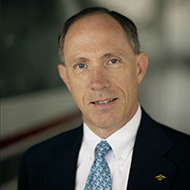"Negative on touch and goes today, Maverick, the pattern is full."
This slightly modified line from the film Top Gun reflects my sentiments regarding when touch and goes ought to be conducted. In a recent Instructor Report section of AOPA Flight Training, Tom Turner discussed some of the pros and cons. I'll offer a con for certain times.
There are times when the pattern at nontowered airports turns into a zoo. Imagine five local aircraft doing touch and goes, an inbound on the ILS, three departures hoping to get out, and two more airplanes attempting to enter the pattern on the 45 from the downwind. That may sound far-fetched, but it happens on nice weekends at many busy nontowered airports.
Scenario 1: The spacing is perfect on the aircraft in front. He's announced his intention to go after touching, and then the pilot who's been waiting patiently at the hold-short line pulls out on the runway for departure in front of you. Go around.
Scenario 2: You're waiting patiently at the departure end of the runway for several minutes as the trainers keep coming and coming on final. That's five bucks burned idling your life away. The arrivals are tightly spaced, but wait - there's an opening. Well, it wasn't, really, but you took it - and the pilot on final announces her go-around with a few choice words directed toward you. It's Scenario 1, from a different viewpoint.
Scenario 3: You've been cleared for the ILS but the weather is marginal VFR with five miles in haze and you're heading straight into the sun. There's no way to see the runway but to line up on the localizer. Aircraft are announcing the downwind, base, and final every 20 seconds or so. They're all moving between 70 and 80 knots, but that's way too slow for the twin you're flying. You announce a three-mile final, two-mile final, and then the next trainer in line turns in front of you. See Scenario 1 above, except the dastardly cut-off maneuver happened a bit earlier in the sequence. Go around.
I could go on, but you're getting the picture. This is tough on students and instructors too. Everything has to be exactly choreographed, and it can be quite distracting for those early in landing training. Tempers fray, and other pilots' ancestry is frequently called into question. You might hear words you never heard in the Bible. Safety rules are bent; traffic separation is not optimal; and the margin for mistakes is thin.
Having observed and participated in many pattern m�langes like this I offer a suggestion. ATC tries to avoid this situation at towered airports and will resort to delaying vectors, a 360 on downwind, or other techniques to allow a few departures and to sequence new arrivals into the pattern. The major difference is that there is some sequence control. The do-it-yourself method works only up to a point.
Sorry to say, but it's selfish of the five or maybe six aircraft to hog the airport as they get their practice. The pattern gets strung out as well. We should be teaching tight, well-controlled patterns. When the three aircraft in front of you don't keep it tight, you're not going to either.
Occasionally there's a courteous gesture, but frequently the baser instincts are more prevalent. I propose that when a nontowered airport gets more than four in the pattern that touch and goes stop. It's probably the airport manager who's going to have to set the policy and then enforce it when there are transgressions. Some pilots won't bag their full quota of landings in an hour, but everybody will get a chance to play safely.
Bruce Landsberg is executive director of the AOPA Air Safety Foundation.



